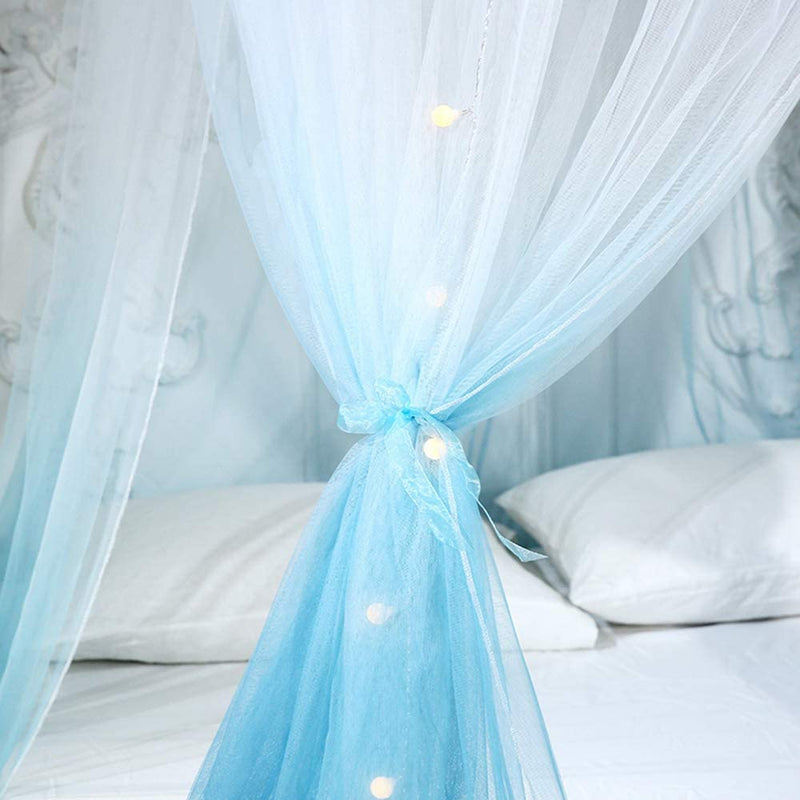
One of the coziest types of beds are canopy beds, which were initially created to provide privacy and conserve warmth.
CURTAINS THAT KEEP LIGHT OUT ON CANOPY BEDS FULL
Related Questions Do You Need A Headboard For Your Canopy Bed?Īlthough a headboard is traditionally part of a canopy bed, you can have a canopy bed without one, without losing out on the glamor of the bed.įor example, you could choose a canopy bed with a circular mount from which curtains hang instead of having a full curtained canopy.Decorating your bedroom and making it even more comfortable and cozy is essential for the quality of your sleep. Solutions for this problem, such as by avoiding a bed frame that’s too large Isn’t always easy in a small apartment, although you can find creative When it comes to the ceiling but around the bed for greater practicality. Going to be putting the canopy bed needs to have enough space for it – not just When you wash your bedding, you’ll also need to clean the canopy bed’s This is the case because their top beamsĬollect dust which needs to be cleaned away regularly. Make sure you have at least a foot between the two. Space between the canopy bed and your ceiling, the whole effect can be cramped Your privacy, just like it did for nobility during previous centuries! If you’re cold, you can keep them closed, which willĬurtains closed around your canopy bed can help to reduce noise and increase Piece of the room, and the more decorative the better when it comes to style. Such as a master bedroom, a canopy bed will be perfect because it works mostīeautifully in a room with lots of space. You’re still not sure if a canopy bed is right for you, consider these pros and

The trend of canopy beds made such an impact that it continued to be fit for royals throughout history. To artistic flair but also ensured greater longevity for the canopy bed. Greater durability, and metal and iron frames were choices that not only spoke Time, the materials that were used to make canopy beds were improved to provide Curtains were then hung on this frame, and they were thick, opulent fabrics that turned the bed into a work of art. Before canopy beds came about, greater privacy would be achieved by hanging curtains from the ceiling, as mentioned above.īut, as time passed and the beds evolved into stylish statement pieces, frames were added to the beds to support the canopy design and these were quite ornate. The frames themselves also underwent great change. A knight or lady’s bed was always something masterful to see, with stylish details such as feather mattresses and wood frames. No longer just used for practical reasons, the nobility now relished in making their beds more artistic. Once the 16 th century arrived, headboards became the focus of canopy bed designs and this also led to canopy beds in general being more decorative. The canopy bed curtains would help to maintain heat during the cold months. Once castles were built for nobility, the purpose of canopy beds moved from ensuring greater privacy at night to having more warmth.

This was used to provide greater support for the canopy. Over time, their design changed, with a frame being attached to the bed. The curtains used for canopy beds started out by being hung from the ceiling. With their attendants getting up throughout the night for various tasks, this further led to the higher classes wanting greater privacy.

Usually this sleeping room was a large hall. Noble people liked to sleep in canopy beds because they offered them greater privacy, and this was important because they used to sleep in the same room as their attendants for greater security. But, although it was seen as a symbol of nobility, it offered many practical uses. It wasn’t something that regular people slept on.

The canopy bed was a bed for royalty, even back then. That idea only started to form and become popular in the 15 th century, as Old and Interesting reports. It might surprise you to find out that the canopy bed goes back to the 14 th century!Īt that time, beds belonging to people with more status were already being made with curtains and canopies, but they weren’t like the full-blown four-poster beds with poles at all four corners that we see today.


 0 kommentar(er)
0 kommentar(er)
